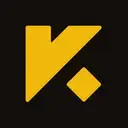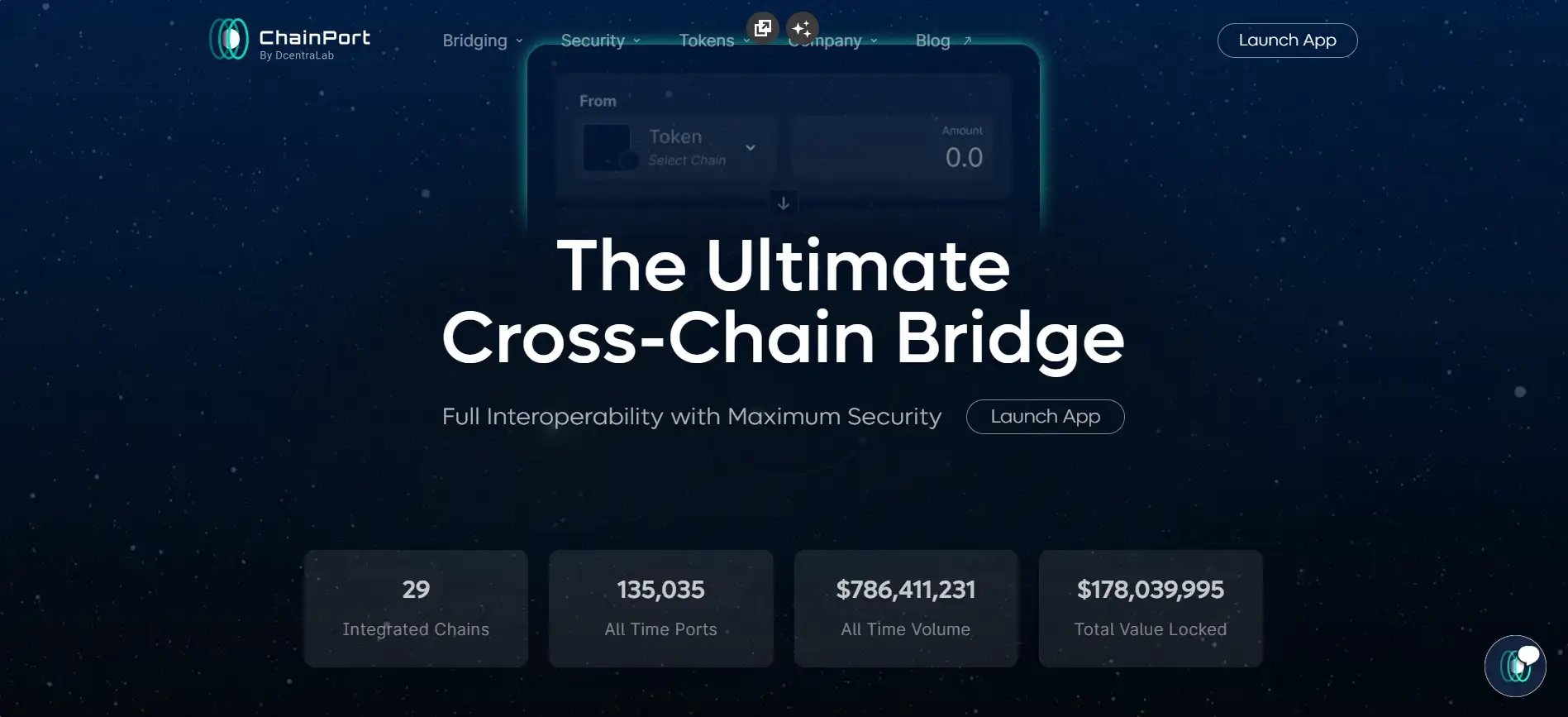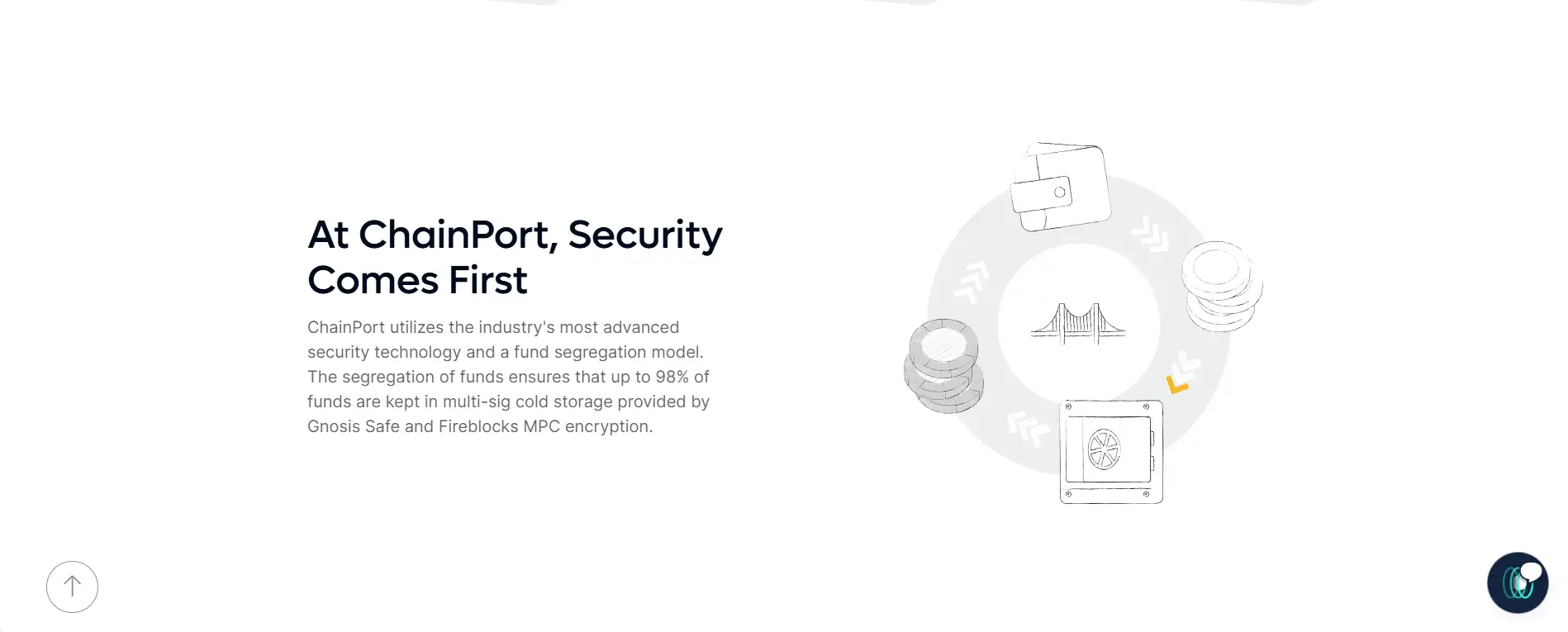About ChainPort
ChainPort is a powerful cross-chain bridge that offers fast, secure, and seamless bridging of crypto assets across over 25 blockchain networks. The platform focuses on providing maximum interoperability without compromising on user experience or security. With multiple bridging options such as wrapped asset bridging, native token bridging, and hybrid bridging, ChainPort allows projects and users to move tokens freely across chains with instant finality and institutional-grade safety.
ChainPort was established in 2021 and has since become a flagship infrastructure project under DcentraLab, alongside products like Hord and TokensFarm. Its commitment to security-first architecture is evident through multi-layer security integrations like multi-sig cold wallets, Fireblocks MPC encryption, and a dedicated bug bounty program. The protocol’s ability to integrate with external bridges, offer private white-label solutions, and maintain full audit transparency has positioned ChainPort as a trusted player in the Web3 ecosystem.
ChainPort has emerged as one of the most secure and advanced cross-chain bridging platforms in the blockchain industry. It supports bridging to and from over 29 chains, including Ethereum, BNB Chain, Polygon, Avalanche, Cardano, Arbitrum, Fantom, Moonriver, and many more. The platform’s infrastructure includes a combination of wrapped asset bridging, native token bridging, liquidity bridging, and hybrid bridging models. These features provide unmatched flexibility and accessibility for users and developers alike.
What truly sets ChainPort apart is its relentless focus on security and transparency. The system is designed with fund segregation using Gnosis Safe and Fireblocks’ MPC cold storage, where over 98% of assets are stored securely. Proof-of-reserves, audited contracts, external validators, and live monitoring provide users with full transparency and peace of mind. The platform is undergoing further enhancement with AI/ML-based threat detection and an insurance program in development.
In addition to its technical superiority, ChainPort’s flexibility is evident through solutions like white-label bridges for enterprises and permissionless integrations. Its SDK and iframe widget allow dApps and Web3 projects to embed secure cross-chain capabilities directly into their platforms. As part of its roadmap for 2024–2025, ChainPort plans to expand multi-chain swaps, launch progressive web apps, support wrapped gas tokens, and integrate with new chains like Iron Fish and IOTA EVM.
Among its key competitors are projects like Wormhole, Synapse, Celer Network, and Multichain. However, ChainPort’s unmatched focus on enterprise-grade security, user-centric design, and scalability make it a standout solution for modern Web3 needs.
ChainPort provides numerous benefits and features that make it a standout project in the cross-chain interoperability landscape:
- Multi-Bridge Architecture: Combines wrapped assets, native tokens, hybrid models, and liquidity bridging to meet the needs of every user.
- Unmatched Security Layers: Uses MPC encryption, multi-sig cold wallets, external audits, and upcoming AI/ML breach detection.
- Full Transparency: Offers proof-of-reserves, real-time activity data, and a comprehensive explorer.
- High Interoperability: Supports 25+ chains, including Ethereum, Polygon, Cardano, Arbitrum, Fantom, and Iron Fish.
- Whitelabel & SDK Options: Enable direct integration into third-party dApps and platforms via API, iframe widget, and SDKs.
- Rapid Bridging Speeds: Most ports are completed within minutes, optimizing the user experience.
ChainPort makes it simple for anyone to begin bridging crypto assets securely across chains:
- Visit the official site: Go to ChainPort.io and click "Launch App" in the top right corner.
- Connect your wallet: Supported wallets include MetaMask, WalletConnect, and others.
- Select source and destination chains: Choose the chains between which you want to bridge tokens.
- Enter amount and token: Choose the token you want to port and input the amount.
- Confirm transaction: Approve the transaction in your wallet and let ChainPort handle the rest.
- Track progress: Use the explorer to monitor your porting process in real-time.
- Explore options: Stake PORTX, access liquidity pools, or explore developer tools directly on the platform.
ChainPort FAQ
Yes, ChainPort offers robust support for wrapped versions of non-EVM assets like wADA (Wrapped ADA), wSTRAX (Wrapped STRAX), and wIRON (Wrapped IRON). This allows users to port assets such as Cardano's ADA or Stratis's STRAX into EVM-compatible chains for use in DeFi, NFT, and gaming dApps without compromising interoperability.
ChainPort offers a Private Bridge solution, giving token issuers complete control over how their tokens are ported. With this tailored feature, projects can define custom rules, use shared key management, and control bridging access. It’s ideal for enterprises and serious Web3 projects that need a compliant and secure path to cross-chain integration.
The Hybrid Bridging system from ChainPort combines the benefits of both wrapped asset bridging and native token bridging. This architecture provides greater efficiency, security, and flexibility for liquidity providers who want to optimize capital across chains while minimizing risk from smart contract vulnerabilities or fragmented liquidity pools.
ChainPort leverages Gnosis Safe multi-sig wallets and Fireblocks MPC encryption to safeguard more than 98% of its assets in cold storage. This setup ensures that funds remain isolated and protected from both internal and external threats, with all transactions requiring multi-party verification and hardware-based isolation layers.
Yes, with the ChainPort SDK and iframe widget, any dApp can integrate cross-chain bridging directly within their UI. This embedded functionality provides a seamless user experience, allowing platforms to offer token bridging without redirecting users to third-party services. It’s a major tool for Web3 developers looking to unify multi-chain access.
You Might Also Like












